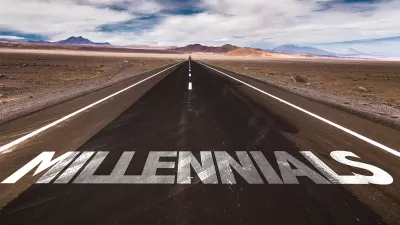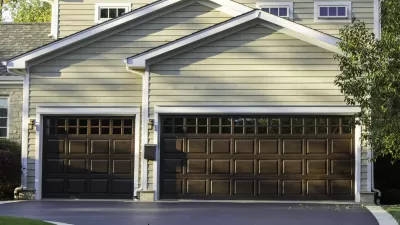Joseph Stomberg of Vox has initiated a series of articles on commuting in America, the first based on the issues explaining the domination of the auto, the second on the debate about the driving decline associated with millennials.

"This new series will look at the surprising history that explains why our commutes look the way they do," writes Stromberg in the introduction to the commuter series. "It'll examine the hidden trends that are slowly changing commuting, and the people and projects trying to redesign it for the better."
Much of the factual information for the first article, "The Utter Dominance of the Car in American Commuting," comes from transportation consultant Alan Pisarski, author of the National Academies' Commuting In America series. The message Stromberg lays out is clear if not controversial: Not only does the auto dominate all other modes, it will likely get larger:
In 1970, the average household had 1.55 cars. In 2013, it had 2.08. And the number of cars a person owns is the best predictor of the likelihood of driving alone to work.
It's easy to see why, armed with this type of data, Stromberg begins the article by writing that a "disproportionate focus on [some] cities has led advocates and journalists to celebrate the resurgence of car-free forms of transportation."
Elano Shor, now a transportation reporter for Politico, wrote in Streetsblog almost six years ago, "Pisarski, respected as an "expert" in the mainstream media, is even more dedicated to keeping America yoked to highway dependence, and he has a litany of influential supporters in his corner."
Fortunately, Stromborg acknowledges the decline in driving that began in 2007 (if not earlier) in his second article on the commuting series, referencing Vox senior editor, Brad Plumer (then writing for Washington Post Wonkblog) whose 2013 piece is posted here.
Stromborg presents both sides to the debate regarding the driving decline associated with millennials. Bloomberg News just reported that "Americans under 35 are almost twice as likely as those above that age to report driving more because of the $1-a-gallon drop in prices at the pump over the past year."
Readers might want to initially bypass the Stromberg's first piece and go straight to "Young people are driving less than their parents. But why?" as it is an excellent read with much to comprehend.
His conclusion:
So, yes, it seems that young people today are driving slightly less and are somewhat less enthusiastic about cars than their parents. But that small shift in preferences, on its own, isn't likely to significantly transform America's car-centric culture.
FULL STORY: The Utter Dominance of the Car in American Commuting

Study: Maui’s Plan to Convert Vacation Rentals to Long-Term Housing Could Cause Nearly $1 Billion Economic Loss
The plan would reduce visitor accommodation by 25,% resulting in 1,900 jobs lost.

North Texas Transit Leaders Tout Benefits of TOD for Growing Region
At a summit focused on transit-oriented development, policymakers discussed how North Texas’ expanded light rail system can serve as a tool for economic growth.

Why Should We Subsidize Public Transportation?
Many public transit agencies face financial stress due to rising costs, declining fare revenue, and declining subsidies. Transit advocates must provide a strong business case for increasing public transit funding.

How to Make US Trains Faster
Changes to boarding platforms and a switch to electric trains could improve U.S. passenger rail service without the added cost of high-speed rail.

Columbia’s Revitalized ‘Loop’ Is a Hub for Local Entrepreneurs
A focus on small businesses is helping a commercial corridor in Columbia, Missouri thrive.

Invasive Insect Threatens Minnesota’s Ash Forests
The Emerald Ash Borer is a rapidly spreading invasive pest threatening Minnesota’s ash trees, and homeowners are encouraged to plant diverse replacement species, avoid moving ash firewood, and monitor for signs of infestation.
Urban Design for Planners 1: Software Tools
This six-course series explores essential urban design concepts using open source software and equips planners with the tools they need to participate fully in the urban design process.
Planning for Universal Design
Learn the tools for implementing Universal Design in planning regulations.
Ascent Environmental
Borough of Carlisle
Institute for Housing and Urban Development Studies (IHS)
City of Grandview
Harvard GSD Executive Education
Toledo-Lucas County Plan Commissions
Salt Lake City
NYU Wagner Graduate School of Public Service





























